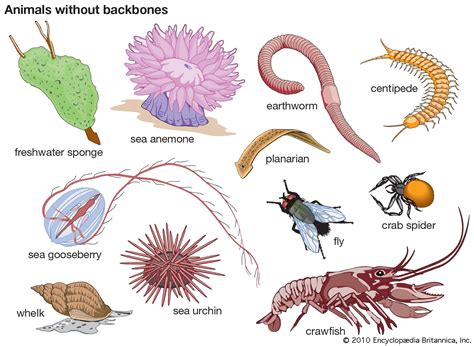Introduction
Invertebrates, animals lacking a backbone, encompass an astonishing diversity of species, each with unique characteristics and traits. Understanding these attributes is crucial for appreciating their ecological significance and developing innovative applications.

Invertebrate vs. Vertebrate Breeds
| **Traits | Invertebrates | Vertebrates** |
|---|---|---|
| Symmetry | Radial or bilateral | Bilateral |
| Body Cavity | Coelomate | Coelomate |
| Circulatory System | Open or closed | Closed |
| Respiratory System | Gills, lungs, or skin | Gills, lungs, or skin |
| Digestive System | Complete or incomplete | Complete |
| Excretion | Nephridia or Malpighian tubules | Kidneys |
Invertebrate Body Plans
Body Plan | Description
—|—|
Radial Symmetry | Body parts arranged around a central axis
Bilateral Symmetry | Body divided into left and right halves
Coelomate | Body cavity lined with mesoderm
Acoelomate | Body cavity not lined with mesoderm
Invertebrate Circulatory Systems
Circulatory System | Description
—|—|
Open Circulatory System | Blood flows freely through body cavities
Closed Circulatory System | Blood confined to vessels
Invertebrate Respiratory Systems
Respiratory System | Description
—|—|
Gills | Thin, vascularized structures that extract oxygen from water
Lungs | Internal sacs that exchange oxygen and carbon dioxide with air
Skin | Thin, moist surface that allows for gas exchange
Invertebrate Digestive Systems
Digestive System | Description
—|—|
Complete Digestive System | Food enters and exits through separate openings
Incomplete Digestive System | Food enters and exits through the same opening
Invertebrate Excretory Systems
Excretory System | Description
—|—|
Nephridia | Tubular structures that filter waste from body fluids
Malpighian Tubules | Blind-ended tubes that extract waste from blood
Invertebrate Breeding Strategies
Invertebrates exhibit a vast array of breeding strategies, including:
- Sexual reproduction with males and females
- Asexual reproduction through budding, fragmentation, or parthenogenesis
- Hermaphroditism where individuals possess both male and female reproductive organs
- Metamorphosis from larval to adult stages
Applications of Invertebrate Traits
Invertebrate characteristics have inspired numerous innovative applications:
- Biomimicry in engineering and design
- Pharmaceuticals derived from invertebrate venom and toxins
- Bioremediation using invertebrates to clean up environmental pollution
- Aquaculture for food production
- Pest control through natural predators
Future Trends and Improvements
In the next decade, advancements in:
- Genomics will enable personalized medicine for invertebrates
- Artificial intelligence will automate invertebrate breeding and selection
- Biotechnology will enhance invertebrate resilience and productivity
- Conservation will focus on preserving invertebrate biodiversity
- Education will raise awareness of invertebrate importance
Conclusion
Invertebrates are a rich source of diversity, traits, and applications. By understanding their unique characteristics and breeding strategies, we can unlock their potential for innovation and contribute to a sustainable future.





















